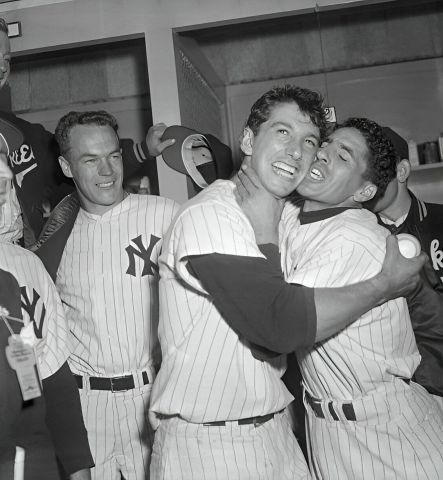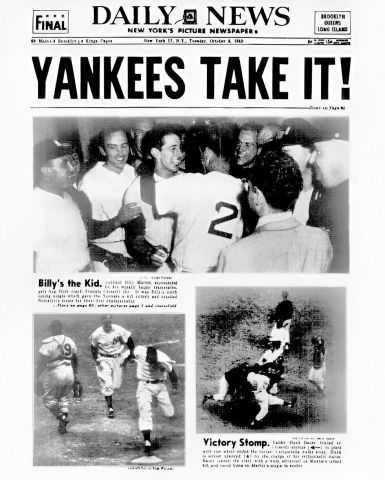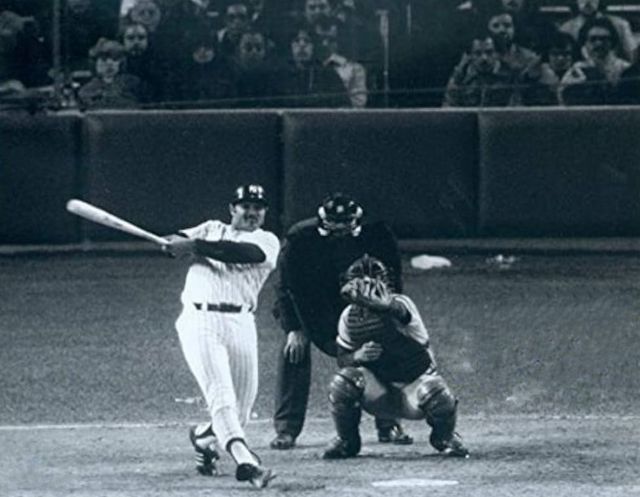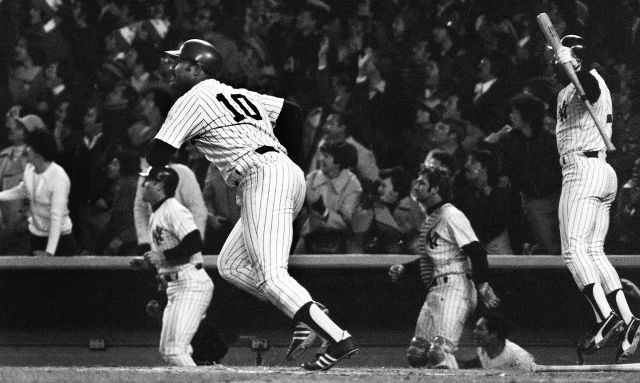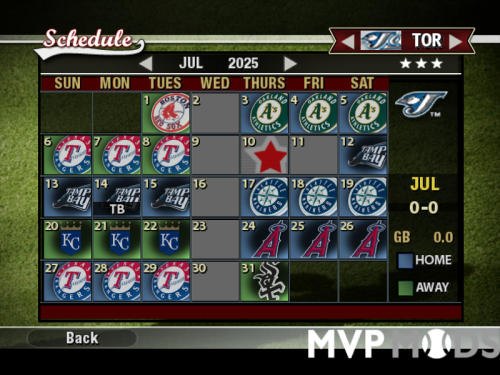-
Posts
21423 -
Joined
-
Days Won
82
Content Type
Profiles
Forums
Downloads
Everything posted by Yankee4Life
-
Thank you Dennis. I still get tired very easily but that will improve as time passes. The hospital people were fine. It's just that I didn't expect to be there. It shows how much I know. 🙂
-
7 out of 10, 68 seconds. Not bad for the difficult ones I go today.
-
10 out of 10, 37 seconds. Not bad but I could have done better. It is in their DNA. I'm serious. 🙂 Don't tell her I said that. With that MMA background she can beat me up. 😬
-
Thank you Jim. I felt bad for all of you that were not sick and still couldn't get in. Trues did a great job getting everything working again.
-
6 out of 10, 64 seconds. Well, I am not winning this month!
-
Hello everyone! I decided to make a thread to explain where I've been and what's been going on because if I wrote this in the shout box it would've been too long. At the beginning of last week I started to feel really sick. A cold, sore throat, a cough and for two nights a fever. A couple of you here suggested that I go get things checked out and I believe I said last Thursday night that I would do that the very next day. So on Friday, March 7th, I went to Urgent Care and they found out that I had Covid and also that I had fluid in my lungs and that was the reason why I had shortness of breath all last week. After this was discovered I was sent to the emergency room where I stayed there for a total of ten hours. Even though it was a very slow day in there I still had to wait that long. But I really couldn't complain because every time I looked around there was always someone there who looked like they were in a lot worse shape than I was. I just wish I had something to read to pass the time away. Later on that night I was sent to a room and I remained there until I was discharged yesterday afternoon. I wanted to come in and say hello and post this then but I was so tired from the lack of sleep then I got when I was in the hospital all I did was go home and go straight to bed. Thank God my sister was around to take care of my dog. Because I had been diagnosed with Covid I could not leave my hospital room for any reason. I was not able to come in here because I did not have my Amazon tablet with me and that's because I did not expect to have to go to the hospital. So I had no Internet access and that meant no Mvpmods updates and I have to admit that the first thing I thought of was not how I was going to get over this Covid stuff but that I had no way to answer the trivia questions each day! The hospital staff is not bad and they were very nice to me. The TV that I had was not very good and I feel sorry for the next guy who occupies that room and tries to use the TV. He will find that it turns off all by itself. The food was okay and surprisingly they make very good coffee. For two days they gave me scrambled eggs for breakfast. They were yellow and they looked like eggs but that's where the similarity ended. One day they gave me French toast and if the French ever saw it they would've denied having anything to do with it. I am very happy to be back and even more than that I am grateful and honored that so many of you asked about me. I want to thank you for that and for all your kind wishes. I like being around here because you guys are the best. Thank you again. I still have to get a lot of rest but I am glad I'm home. I would have been back a couple of days ago but the site was down and I am glad that Trues figured out what was the problem. We owe him a lot.
-
Please do not use these rosters because they are probably over fifteen-years+old. Look for the most recent rosters and go from there.
-

looking to accquire mvp baseball 2005 pc cd
Yankee4Life replied to ikz's topic in Left Field (Off-Topic)
Keep on checking eBay. It may not be there today or tomorrow but it will be posted. -
4 out of 10, 81 seconds. What a bad week.
-
8 out of 10, 114 seconds. A decent day although very slow.
-
3out of 10, 95 seconds. Rugby questions. What the hell?
-
5 out of 10, 84 seconds. A bad day all around. A lousy score and I have a cough and a cold that is knocking me for a loop.
-

Great and Historical Games of the Past
Yankee4Life replied to Yankee4Life's topic in Baseball History
October 5, 1953: Billy Martin’s walk-off single lifts Yankees to fifth consecutive World Series title Phil Rizzuto can not contain himself as he practically strangles Billy Martin after the 24-year-old hitting hero of the Series' final game fought his way into the Yankee dressing room. Martin, who now has a place in baseball history singled home the winning run in the 9th inning to break a 3-3 tie that swept the Yankees to a record smashing fifth straight World series championship. Martin tied Pepper Martin's series hit record with 12. The New York Yankees entered Game Six of the 1953 World Series against the Brooklyn Dodgers looking to secure a record fifth consecutive World Series title. The Yankees had taken control of the Series by beating Brooklyn 11-7 in Game Five at Ebbets Field to take a three-games-to-two lead. Billy Martin had been the star of the fall classic. The feisty second baseman entered Game Six hitting .526 with four extra-base hits in the Series. Game Six would only add to his October legacy. The Yankees sent Whitey Ford to the mound. Ford had gone 18-6 with a 3.00 ERA during the regular season, but had a disastrous Game Four start just two days earlier, when he lasted only one inning and allowed three earned runs. Brooklyn countered with Carl Erskine, who’d gone 20-6 with a 3.54 ERA during the regular season and was coming off a masterful performance in Game Three, when he allowed two runs in a complete-game win and struck out a World Series-record 14 batters. However, Erskine was taking the mound on only two days’ rest. After Freddy Parent, shortstop for the 1903 Boston Red Sox, threw out the first pitch to celebrate the 50th anniversary of the first World Series, the two teams took the field at Yankee Stadium in front of 62,370 fans on a chilly, overcast day. The Yankees wasted no time getting to Erskine. Gene Woodling drew a walk to lead off New York’s half of the first. After Joe Collins struck out, Hank Bauer singled to left. Yogi Berra then brought home the first run of the contest on a liner to right field, “the ball skipping and bouncing along before being deflected into the stands by (Carl) Furillo’s mitt for a ground-rule double as Woodling scored,” wrote Joe Trimble of the New York Daily News. Mickey Mantle was intentionally walked to load the bases for the red-hot Martin, who hit a one-bounce liner to the right of second baseman Jim Gilliam. Gilliam managed to knock it down, but failed to make a play as the ball dribbled away from him. All the runners were safe, as Bauer raced home. Aware that Martin was approaching the record for hits in a single World Series, those in attendance did not take kindly when Gilliam was charged with an error, rather than Martin being awarded a hit. When an “E” was put on the scoreboard, “there was a roar of disapproval from the crowd and virtually every player on the Yankees bench stood and waved derisively at the press box.” “I’ve fielded others like that – and I’ve missed ’em too,” Gilliam said of the misplay. “But I expected to get the ball. It was a low liner that came on a short hop. It hit my glove but it didn’t stick.” The Yankees continued to put pressure on Erskine in the second inning. Phil Rizzuto and Ford each singled to put runners at the corners with no outs. Woodling hit a sacrifice fly to deep left field to bring Rizzuto home for the Yankees’ third run. Collins hit a tapper up the third-base line that Erskine fielded, but he threw over Gil Hodges’ head at first, allowing Ford to go to third and Collins to second. Bauer was then walked to load the bases. Berra stepped to the plate with a chance to break the game wide open. He hit a fly to deep center field that Duke Snider caught, and “the blow was so deep that Duke conceded the run, throwing to second to keep Bauer at first.” But as Gilliam caught the ball, “he heard Campy (catcher Roy Campanella) screaming for a throw.” Gilliam fired home to Campanella who applied the tag on Ford for an inning-ending double play. Ford later explained why he didn’t score on what looked like an easy sacrifice fly. “I was unable to see Duke Snider complete the catch and left early,” he said of the mishap. “(Third base coach) Frankie Crosetti told me to return and tag up. I did and was an easy out at the plate.” Erskine left the game after the fourth inning, having allowed three runs on six hits and three walks. He was replaced by rookie Bob Milliken, who tossed two shutout innings. The only run Ford allowed came in the sixth inning. Jackie Robinson doubled to left field with one out. He stole third without drawing a throw and came home when Campanella hit a slow groundball to short. After the seventh inning, “in a move as startling as any in his brilliant managerial career,” Casey Stengel removed Ford and replaced him with Allie Reynolds. “A murmur of disapproval from the crowd” met the pitching change. Ford seemed to have been rolling, allowing only one run on six hits and a walk, while striking out seven. “Whitey pitched well,” Stengel said, “but that Bobby Morgan’s fly at the end of the seventh was hit real hard. I didn’t want to take any chances against those good hitters the Dodgers would have coming up in the eighth. I figured Reynolds with a two-run lead would hold it for two innings.” “I felt bad when Casey took me out,” Ford said. “Then I thought, ‘Well, he hasn’t been wrong in five years.’” Reynolds had strained a muscle in his back while starting the Series opener. He’d returned to the mound to record the final two outs of Game Five. As he walked to the mound to try to secure the Yankees’ fifth consecutive championship, the stadium lights turned on. It was only slightly after 3 P.M., “but the raw, cold, overcast weather made it seem like nightfall.” Reynolds surrendered a harmless single to Robinson in the eighth inning. In the ninth, Snider worked a one-out walk to bring Furillo to the plate as the game’s tying run. Furillo drilled a two-run home run to right field, as “the stadium roared in the wildest moment of the Series, the lights went on again in Brooklyn and Dodgers bench-warmers streamed out to shake the hand of the man who had brought them from the jaws of death.” Furillo’s game-tying home run was the 17th homer hit by the two teams in the Series, breaking the record set by the same two teams a year earlier. Reynolds rebounded after Furillo’s big blast to strike out Billy Cox and Clem Labine and send the game to the bottom of the ninth tied, 3-3. Labine, who’d entered the game in the seventh inning, took the mound for the Dodgers in the ninth. He walked Bauer to start the inning, but was able to get Berra to line out to right field for the first out. Mantle then hit what Trimble called “a sleazy little roller to the third base side of the mound” that went for an infield hit. That brought Martin, who’d already doubled in the fifth inning for his 11th hit of the Series, to the plate with runners at first and second. The Series star hit the second pitch he saw back through the box and into center field. Bauer “stormed home from second, as Snider forlornly trotted in and fielded the ball.” “When I was up there, I don’t know exactly what I was thinking, except that I just wanted to get that run home,” an exuberant Martin said. The victory gave the Yankees their 16th World Series championship and record-setting fifth in a row. Many Yankees players believed the team was only getting started. “I don’t see why this ball club shouldn’t keep winning pennants indefinitely,” Rizzuto said. “After all, we’re loaded with young players. I’m the only old guy on the club.” (Rizzuto was 35.) But this Series was all about Martin’s performance. His 12 hits tied Buck Herzog (1912), Shoeless Joe Jackson (1919), Pepper Martin (1931), and Sam Rice (1925) for the most hits in a World Series. Many of his teammates felt he should have had one more hit and broken the record – if the groundball to Gilliam in the first inning had been scored a hit rather than an error. “I never saw such lousy scoring,” Yankees coach Bill Dickey complained. “A hit if I ever saw one. What have you got to do to get one these days? Hit one into the seats? It’s a shame to take that one away from him.” Martin, who batted .257 during the season, finished the series 12-for-24 with two home runs, two triples, one double, one walk, five runs scored, and eight RBIs. Rizzuto, who’d just finished playing in his eighth fall classic, proclaimed that Martin “played the greatest Series I ever saw.” “We got beat by a .250 hitter,” Dodgers manager Chuck Dressen complained. “That little stinker is the best damned ballplayer they got.” “He’d run through a buzz saw to beat you,” Dressen added. “Biggest moment of my life,” an elated Martin said of his Series-winning hit. “I was damn glad to get that 12th hit. The hell with the 13th. We won, didn’t we? That’s all that counts.” Five in a row says the Daily News! -
10 out of 10, 32 seconds. I had better gotten all ten right. One was (believe it or not) who plays their home games at Yankee Stadium? 😄
-

Great and Historical Games of the Past
Yankee4Life replied to Yankee4Life's topic in Baseball History
-

Great and Historical Games of the Past
Yankee4Life replied to Yankee4Life's topic in Baseball History
October 14, 1976: Chris Chambliss’ home run delivers pennant to the Bronx It had been 12 years since the Yankees participated in the postseason. In 1964 they lost a thrilling seven-game World Series to the St. Louis Cardinals. Up to then they had won the American League pennant in 14 of 16 seasons beginning in 1949. Love the Yankees or hate them, it is unquestionably one of the greatest runs of success in the history of any professional sport. Not many non-Yankees fans felt bad for the team when it hit rock bottom in 1966, finishing last in the 10-team AL standings. After their appearance in the 1964 World Series, the Yankees did not challenge for the flag, and were still stagnant when each league was divided into two divisions in 1969. Baltimore was king of the hill in the AL East Division as the Yankees floundered. The Orioles won five of six division titles from 1969 to 1974, and in that last season the Yankees began to make their comeback. New York finished in second place, two games behind Baltimore. Baltimore thumped the Yankees during the 1976 regular season. But New York posted a winning record in each month of the season. When July ended, the Yankees had a double-digit lead (10½ games) over Baltimore that they never relinquished on their way to winning the division. Kansas City won in the West Division, putting an end to the dominance of the Oakland Athletics, who had won five straight division titles beginning in 1971 and World Series championships each season from 1972 to 1974. At that time the ALCS was played in a best-of-five-games format. The Royals and Yankees each won a game on the road and the series was tied at two wins apiece with the deciding game set for October 14 at Yankee Stadium. Perhaps it was appropriate that a game with so much riding on it was being played in the Bronx. The Yankees had played their home games at Shea Stadium in Queens the previous two seasons as Yankee Stadium underwent a facelift. The weather was clear and chilly, with the temperature in the low 40s. Still, 56,821 spectators braved the cold. The pitching matchup was the Royals’ Dennis Leonard (17-10) vs. the Yankees’ Ed Figueroa. (19-10). Each had led his team in wins, but it was a safe assumption that for the pitching staffs, it would be all hands on deck in a winner-take-all game. In the top of the first inning, George Brett stroked a two-out double to right field and came home on John Mayberry’s home run. The Royals’ 2-0 lead was short-lived. For the Yankees, Mickey Rivers led off with a triple to left-center and came home on a single by Roy White. White stole second base and went to third on a single to left by Thurman Munson, who took second base on the throw to third. Royals manager Whitey Herzog went to the bullpen, bringing in left-hander Paul Splittorff. The left-handed-swinging Chris Chambliss tied the score with a sacrifice fly to left field. Just as quickly as the Yankees had tied the game, the Royals untied it in the top of the second inning. Cookie Rojas singled to center field with one out and stole second. Freddie Patek struck out, but Buck Martinez singled to right field, scoring Rojas and giving the Royals a 3-2 lead. As if the two clubs were playing a game of “Anything you can do, I can do better,” the Yankees reached Splittorff for two runs in the bottom of the third. Their first three batters reached base: Rivers singled to center, White walked, and Munson hit an RBI single to center. White went to third and scored on Chambliss’s force-play grounder to second. That made it 4-3, Yankees. Marty Pattin relieved Splittorff with two outs in the fourth and Andy Hassler replaced Pattin in the fifth. In the sixth the Yankees added to their lead. Rivers led off with a bunt single and took second on a sacrifice by White. Munson singled to right field to plate Rivers, but the Yankees catcher was thrown out trying to get to second. With two down, Chambliss singled to center field and stole second, then scored when Brett threw away Carlos May’s grounder. The Yankees led 6-3 going into the top of the eighth inning. With the pennant within the New Yorkers’ grasp, their fans were ecstatic. Figueroa was still on the mound; he had blanked Kansas City since the second inning. But when Al Cowens singled to left field to open the eighth, Yankees manager Billy Martin brought in left-hander Grant Jackson. Herzog was pushing buttons in the opposing dugout, and called on right-handed-batting Jim Wohlford to pinch-hit for Tom Poquette. The move worked; Wohlford singled to center. Brett stepped up and smashed a pitch by Jackson over the fence, tying the game, 6-6. Dick Tidrow came on to pitch for the Yankees in the top of the ninth. With two down, the Royals got a single from Martinez and a walk to Cowens. Wohlford slapped a slow grounder to Graig Nettles at third base. Nettles threw to second and umpire Joe Brinkman called Cowens out. TV replays clearly showed that it was a blown call. The Royals would have had the bases loaded and Brett coming to the plate had the correct call been made. Herzog, who did not argue the call, disagreed with Brinkman. But Herzog knew arguing the call would fall on deaf ears, and also did not want to take the chance of getting pelted with the various projectiles that were flying out of the stands. As the bottom of the ninth began, Chris Chambliss was first up against Royals reliever Mark Littell, who had pitched a clean eighth. As Chambliss waited for Littell to finish his warm-ups, Yankees’ public-address announcer Bob Sheppard cautioned the crowd against throwing debris onto the field. The game had already been stopped several times for bottles, firecrackers, beer cans, and rolls of toilet paper thrown from the stands. Chambliss stood by the bat rack, annoyed by the delay. Littell was annoyed, too. With an 8-4 record, 16 saves, and a 2.08 ERA, the 23-year-old possessed a live fastball and a wicked slider. The delay prevented Littell from staying loose and interfered with his rhythm. Finally, at 11:43 P.M., Chambliss stepped into the box and home-plate umpire Art Frantz yelled, “Play ball!” Chambliss was 10-for-20 with 7 RBIs in the series so far. He narrowed his eyes, looking for a fastball from Littell. Littell indeed threw a high, inside fastball. Chambliss reared back, stepped into the pitch, and smashed it over the right-field wall. Chambliss stood momentarily at home plate, watching the ball fly through the autumn air, not sure if it would leave the ballpark. “It felt good,” he said. “I thought it had a chance.” Meanwhile fans poured onto the field. As Chambliss rounded first base, fans ripped second base from the ground. Chambliss touched the base with his right hand and continued to run through the maze of humanity. He fell in the basepath, accidentally knocking a rampaging fan over, then he tagged third and headed home. When fans tried to grab his helmet, Chambliss tucked it under his arm, like a football. Like a fullback looking for a small hole at the line of scrimmage, Chambliss was spun completely around in a circle and powered his way through the throng. He was then escorted to the Yankees clubhouse by two policemen. “I had gone to home plate to congratulate him,” said Yankees coach Dick Howser. “I saw him rounding first, then I lost him. I caught him again between second and third, but he disappeared. I figured eventually he’d make his way around if he followed the green outline.” “Home plate was completely covered with people,” said Chambliss. “I wasn’t sure if I tagged it or not. I came in the clubhouse and all the players were talking about whether I got it. I wasn’t sure, so I went back out.” Graig Nettles urged Chambliss to return to home plate to make it official. “I wanted to make sure there was no way we were going to lose it,” Nettles said. Dressed in a police raincoat to avoid further harassment from the scores of fans still milling around on the field, Chambliss jogged out to home plate, found it had been dug up and removed, replaced by a hole. He touched the hole with umpire Frantz still on the scene, and returned to the champagne party. In a most historic and memorable fashion, Chris Chambliss delivered the first American League pennant to New York in the renovated Yankee Stadium, and the first one for the team since 1964, ending the 12-year drought. It was a dramatic victory for the Yankees, won by a player who prided himself on steady professionalism, not drama. -
6 out of 10, 68 seconds. Well, not a good way to start the month. Here are the final results for the short month February.
-
9 out of 10, 30 seconds. When I miss a question on a Friday it really gets me upset and I missed such an easy one I am embarrassed. You see? 😲 Thank you for your congratulations for this month's win. It really helped having a fifth player in the game because for the first eleven days philthepat was on top and when we have another player it is tougher.
-
6 out of 10, 68 seconds. I do not think I have ever had a premiership question correct yet.
-
6 out of 10, 83 seconds. Another tough day. I thought I had more questions right.
-
3 out of 10, 83 seconds. Oh what the hell! 😲
-
-
Dylan, I really wish you would come around here more often. You’re a good guy. Besides, you and I have the same birthday so we have to stick together!
-
8 out of 10, 53 seconds. Considering the questions I got I am very happy with the result.
-
10 out of 10, 32 seconds. Fridays and Sundays are the best for us all.



